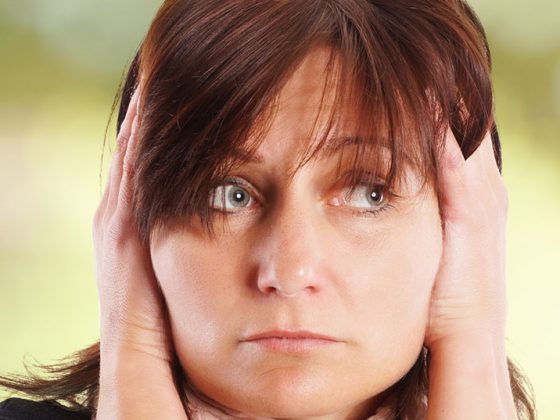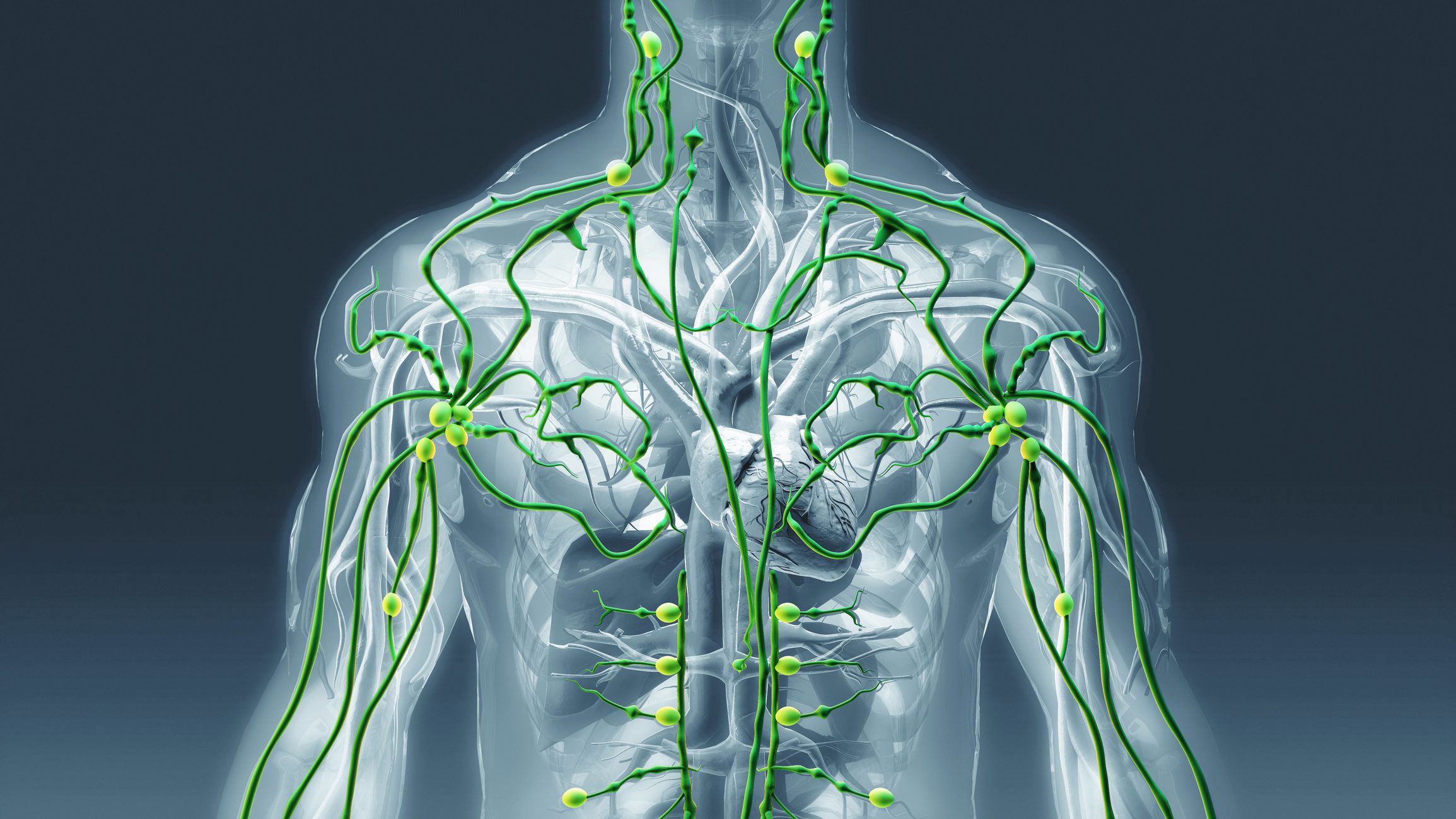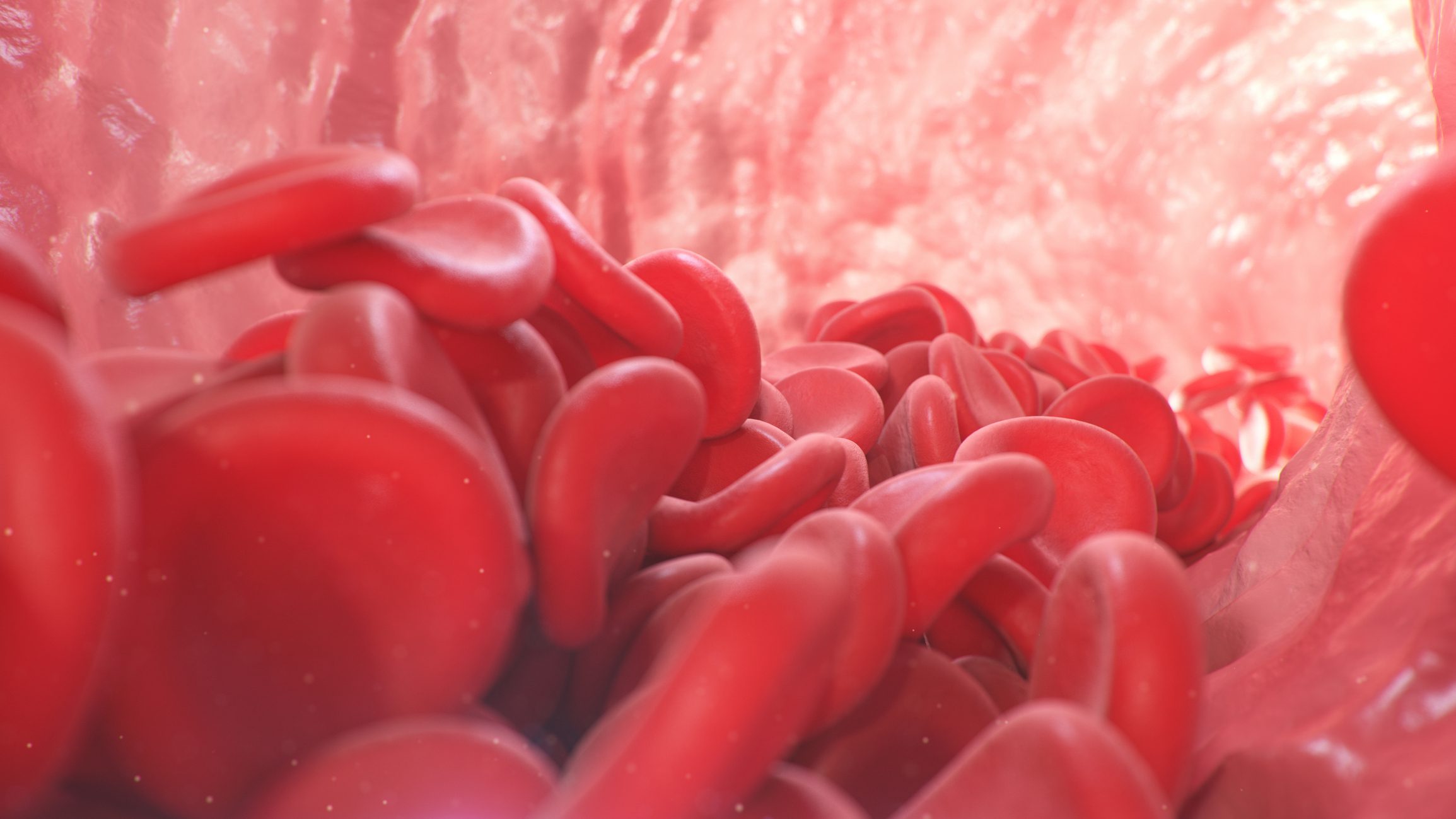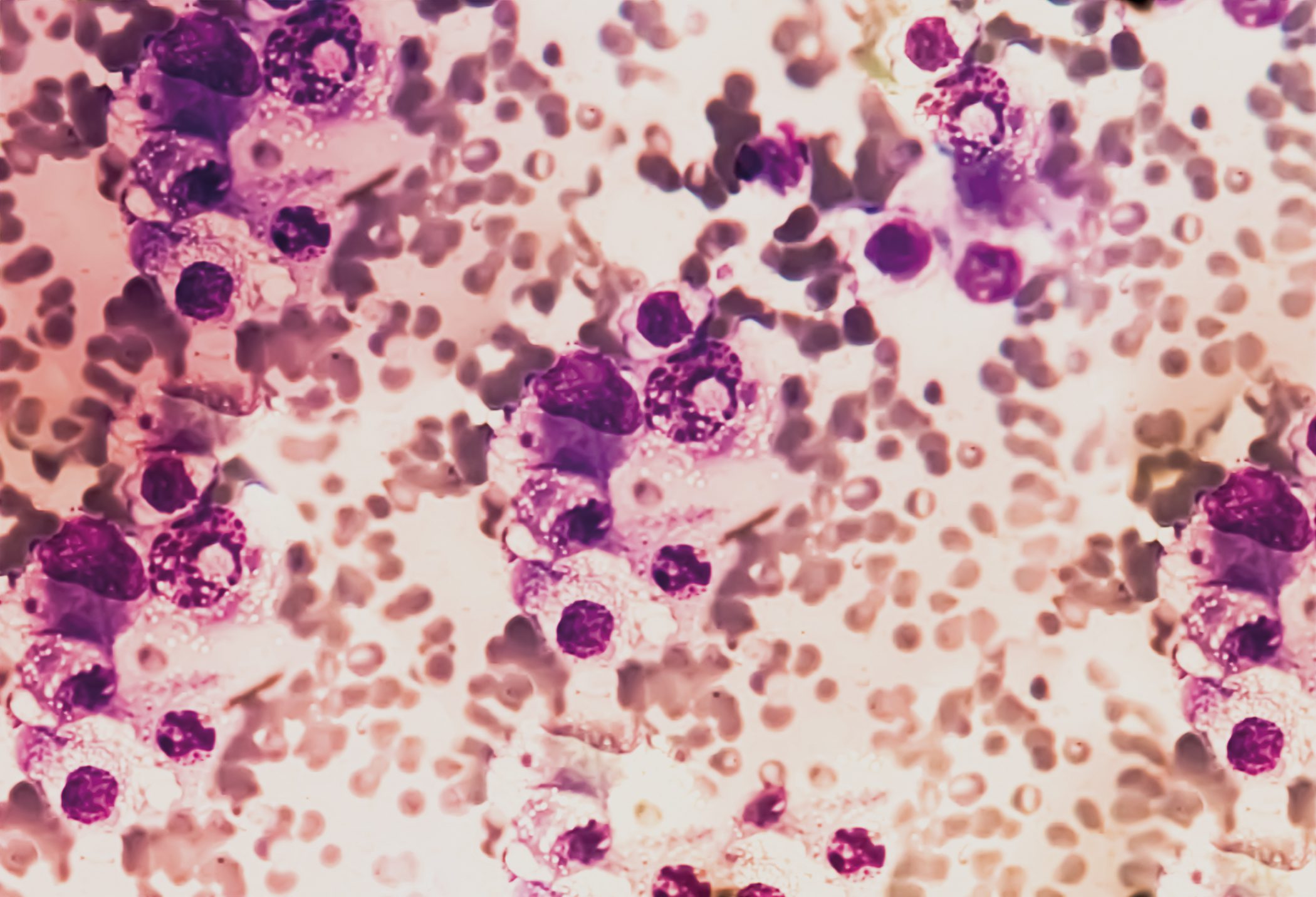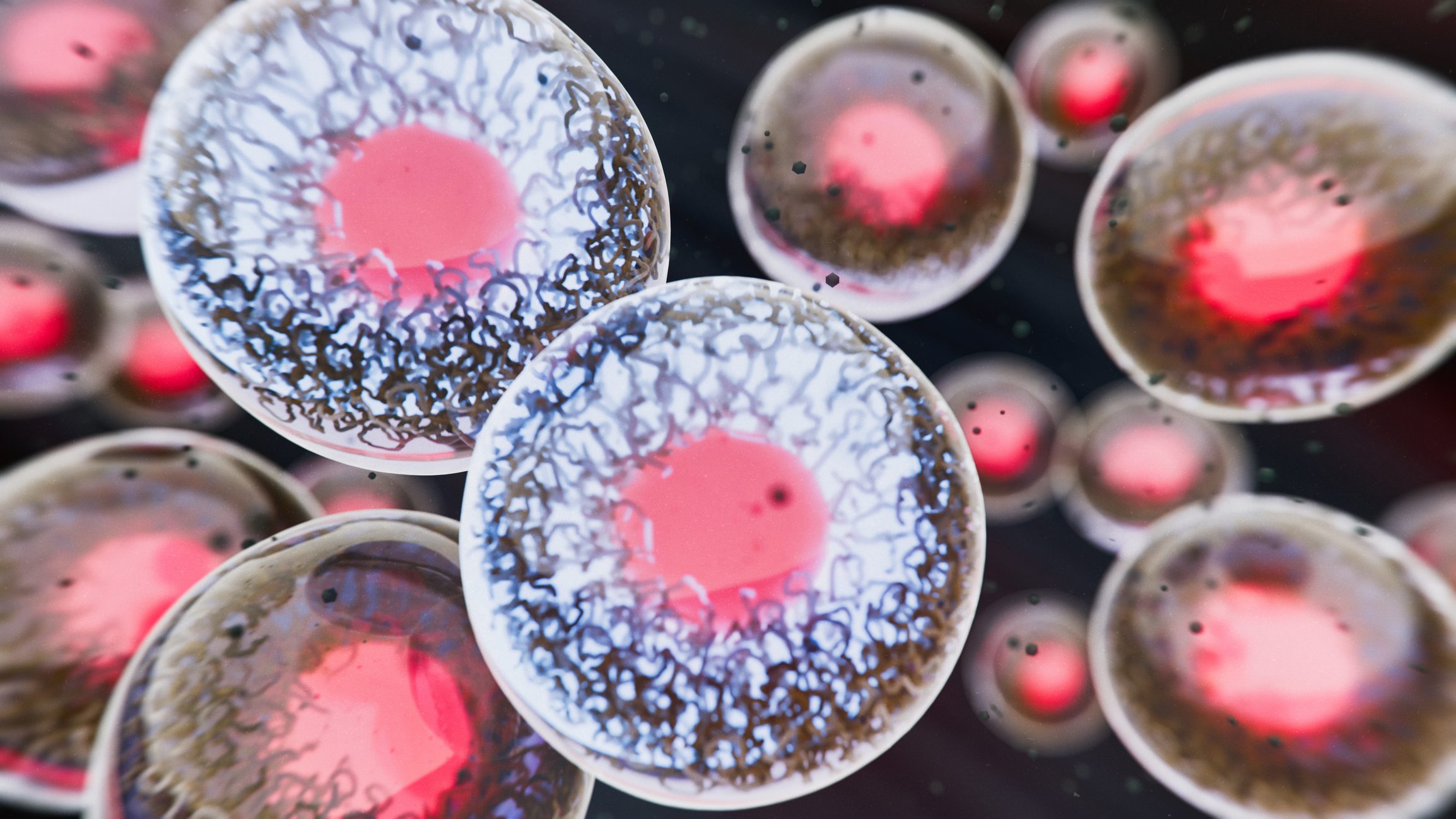Complementary medicine methods are used by many sufferers of atopic eczema, although scientific data often do not exist. This is especially true for homeopathy, treatment with Schuessler salts and bioresonance therapy. Acupuncture may have beneficial effects on itching. The benefits of topical and oral Chinese herbal medicine are at least questionable according to current knowledge.Sunflower and coconut oil have beneficial effects on skin barrier and eczema. Olive oil should not be used due to its irritating effect. Prescription of evening primrose oil or probiotics as a dietary supplement cannot currently be recommended.
Atopic eczema is a very common and complex skin disease that particularly affects children in the first years of life. A major feature of the disease is its relapsing course with myriad possible trigger factors. Sensitization or clinically relevant allergies to food or inhalant allergens are also significantly more frequent in affected children than in the normal population, although these only have a significant influence on the course of eczema in individual cases. In recent years, great progress has been made in understanding the pathogenesis of atopic eczema, which has increasingly focused on disruption of the epidermal skin barrier as a central element [1]. The complex interaction of disturbed skin barrier, immune system and exogenous factors against the background of a genetic disposition is difficult to understand for laypersons. Rather, years are spent searching for a specific trigger, often focusing on food allergies and intolerances. While conventional medicine primarily uses skin-directed forms of therapy with very good efficacy, those affected are often disappointed by recurrences and there is an understandable desire to “get to the root of the problem”.
At this point, alternative medicine procedures come into play, typically purporting to address the skin problem holistically and at the root cause, rather than just fighting symptoms. It is estimated that up to 50% of patients use alternative medicine treatments [2]. Alternative medicine is usually defined as methods of treatment for which there is no scientifically valid evidence of efficacy. In the meantime, the field of providers and methods has become unmanageable.
Even though most dermatologists do not offer alternative medical procedures, it is still important that we have a certain overview of the individual methods and their evidence base, as patients very often approach us with corresponding questions. This is particularly true of atopic eczema. Moreover, it cannot be excluded that in the future an effective eczema therapy will emerge from the spectrum of complementary medicine. In the following, common alternative medical procedures for atopic eczema used in Switzerland and in the rest of the German-speaking world will be examined in more detail.
Traditional Chinese Medicine (TCM) and Acupuncture
TCM is based on a complex teaching about the body and diseases that has grown over thousands of years. There are very different teaching directions and schools. Herbal mixtures are often prescribed for ingestion or topical application. A Cochrane review published in 2004 found evidence of possible efficacy of Chinese herbal mixtures in the treatment of atopic eczema [3]. However, only four studies could be included in the review. A 2007 prospective, randomized, placebo-controlled trial showed an improvement in quality of life and a reduction in the need for topical steroids in children who took a Chinese herbal mixture for three months [4]. In 2013, a review was also published, which also acknowledged some efficacy of TCM, although the quality of the data was judged to be insufficient for definitive conclusions and recommendations [5]. In contrast, the new edition of the Cochrane review in the same year concluded that there was no substantiated evidence for the efficacy of systemic or topical application of Chinese herbs [6].
Based on the available data, it cannot be ruled out that TCM herbal mixtures may have potential benefits in some cases. In all large studies, they also showed good tolerability mostly without severe side effects. However, isolated cases of liver and kidney failure and misuse of corticosteroids have been reported. Likewise, contact sensitization to plant substances cannot be ruled out with topical application.
Acupuncture showed positive effects on the development of pruritus in a randomized, placebo-controlled work [7], which may be relevant to atopic eczema. In addition, acupuncture combined with TCM is reported to be better than TCM alone in the treatment of eczema [8], although this study lacked a control group. In 2003, the WHO published a report on diseases and conditions for which scientific studies demonstrate the efficacy of acupuncture [9]. Atopic eczema is listed therein as a condition for which evidence of efficacy exists, but further evidence is needed. So possibly acupuncture could be a treatment option for some patients. However, ensuring use under sterile conditions is central to avoiding soft tissue infections, for example with atypical mycobacteria [10].
Homeopathy and Schuessler salts
Homeopathy goes back to the German physician Samuel Hahnemann (1755-1843). The central element of the doctrine is the “principle of similarity”, according to which medicines are to be selected in such a way that they produce in healthy subjects those symptoms which are to be treated in the sick person. Another important principle is the gradual dilution of medicines (“potentization”). The homeopathic medicines are taken in the form of drops or globules and can also be used as externals (e.g. Omida® Cardiospermum Ointment).
Although homeopathy is widely used worldwide, scientific evidence of its efficacy has been lacking until now. A large paper from the Lancet on the use of homeopathy for different diseases concluded in 2005 that the effect of homeopathy did not go beyond placebo effects [11].
A randomized, placebo-controlled, double-blind trial in atopic eczema found no differences between the homeopathy and placebo groups, although the failure rate due to treatment ineffectiveness was large in both groups [12]. Another study showed that homeopathy was not superior to classical therapy but was more expensive than it [13]. A systematic review also failed to find evidence of efficacy [14].
Thus, according to the current state of knowledge, it can be considered proven that homeopathy is ineffective for the treatment of atopic eczema.
In 1873, the German homeopath Wilhelm Heinrich Schüssler published a new healing theory called “Biochemical Healing Method”. It is based on the assumption that diseases are largely due to a disturbed mineral balance in the cells, which affects the whole organism. Unlike homeopathy, there is no “similarity principle”, however, he retained the concept of “potentization”. The central element are the twelve Schüssler salts, to which 13 other “supplementary salts” were later added. They are available for ingestion or as topical therapy. To our knowledge, no scientific studies on efficacy have been published. Due to the underlying theory and the strong dilution of the mineral salts, an effect seems at least questionable. At least, neither for the therapy with homeopathy nor with Schuessler salts more severe side effects are known.
Bioresonance therapy
The theory of bioresonance therapy is based on the assumption that all molecules, cells and organs emit electromagnetic waves and thus influence each other. As long as the waves of an organism vibrate in balance, it is healthy. If a toxin, an allergen or an infectious agent enters the body, it is said to disturb the vibrational harmony of the body with its different vibration pattern, which leads to illness. The disturbing vibrations should also be able to be stored in the body water. An electronic detection device is used to scan and analyze the vibrations of a body. During therapy, it should be possible to “cancel out” the disturbing oscillations by means of “inverse counter-oscillations”. Bioresonance is also very often used in allergy diagnostics.
There exists in the medical literature a double-blind, placebo-controlled study (from Da-vos) on bioresonance therapy in children with atopic eczema [15], which could not show any efficacy. This is not surprising, since the theory is physically hardly tenable and our body is exposed to too much exogenous radiation (cell phones, WiFi networks, etc.) for the postulated body vibrations to be detected by the bioresonance device. In 2006, the Swiss Society for Allergology and Immunology took a very firm stand on bioresonance and clearly negated its usefulness in both allergy diagnostics and therapy [16]. In our experience, bioresonance should also be firmly rejected, as it very often leads to clinically untenable, multiple allergy diagnoses (mostly sugar, wheat, milk). Usually, therefore, therapy is accompanied by extended, unnecessary, and, especially in infancy, potentially dangerous omission diets. In addition, complex and expensive allergological testing and provocation procedures are often required as a result to disabuse families of the idea of multiple “food allergies.”
Alternative basic therapeutics
Classic emollients essentially consist of hydrocarbons of different lengths, which are derived from petroleum. Recently, quite a few families have been asking for “natural”, mineral oil-free basic therapeutics. Various manufacturers have launched such products on the market and advertise them accordingly. But the use of unprocessed, pure oils, especially olive, almond, sunflower and coconut oil, is also in vogue.
While olive oil has been shown to have negative effects on the condition of the skin barrier and to cause mild irritation and erythema even in skin-healthy individuals after prolonged use [17], sunflower and coconut oils in particular may be beneficial to the skin.
Sunflower oil has been shown to lead to preservation of the epidermal skin barrier, improved hydration of the stratum corneum [17], and a significant reduction in nosocomial infections in preterm infants when applied topically, an effect that was not demonstrated in the group using a mineral oil-based product (Aquaphor®) [18]. This has led to several neonatal clinics introducing sunflower oil for skin care. A recent paper, on the other hand, found a delay in postnatal maturation of the skin barrier in premature infants treated with sunflower oil [19], so its role has not yet been conclusively determined.
Coconut oil has been used for a long time as a skin care product and is becoming increasingly popular. It may actually be superior to mineral oils in the treatment of atopic eczema [20], especially since it has antimicrobial properties, particularly against S. aureus, in addition to its caring effects [21].
Food supplements (evening primrose oil, probiotics)
Evening primrose oil has been used orally for atopic eczema for years. Although individual studies demonstrate a good effect [22], the majority do not show a positive effect on atopic eczema [23,24]. Therefore, its use cannot be recommended in principle.
The idea behind the use of probiotics is to positively influence the intestinal microbiome and thus the immune system through oral intake of certain beneficial strains of bacteria. For a few years there was a certain euphoria after publication of an impressive and sustained risk reduction of atopic eczema by probiotics [25,26]. In the meantime, however, the majority of data show no proven benefit [27–29]. Another problem is that very different strains of bacteria are used, which probably do not all show the same effects. At the present time, based on the data available, the use of probiotics in atopic eczema cannot be recommended [24], but it cannot be ruled out that some effective bacterial strains will be found in the future.
Concluding remarks
In principle, we dermatologists should not completely close our minds to complementary medical procedures, and in most cases there is nothing wrong with complementary medical therapy accompanying conventional medical treatment. However, at our clinic we often experience the use of complementary medicine as very problematic. This is primarily due to the fact that complementary medicine therapists are often very dogmatic and demonize all measures of classical medicine. Thus, it is not uncommon to see markedly undertreated children with severe eczema who exhibit severe failure to thrive, especially if they are also subjected to an irrational and complex diet. In some cases, the facts of neglect or child abuse may well be met. In extreme situations, deaths, for example due to infections, have also been described [30]. Last but not least, complementary medicine therapies and products are also often very expensive.
In most cases, long and repeated discussions are necessary before an attempt at conventional medical treatment is accepted by the affected families. However, it is not uncommon for us to experience that the rapid improvement of the skin, but especially of the general condition of the affected child, leads to a positive attitude towards conventional medicine, so that this effort pays off in any case for the benefit of the child.
Literature:
- Peng W, Novak N: Pathogenesis of atopic dermatitis. Clinical and experimental allergy: journal of the British Society for Allergy and Clinical Immunology 2015; 45: 566-574.
- Fisher P, Ward A: Complementary medicine in Europe. BMJ 1994; 309: 107-111.
- Zhang W, et al: Chinese herbal medicine for atopic eczema. Cochrane Database Syst Rev 2004; (4): CD002291.
- Hon KL, et al: Efficacy and tolerability of a Chinese herbal medicine concoction for treatment of atopic dermatitis: a randomized, double-blind, placebo-controlled study. Br J Dermatol 2007; 157: 357-363.
- Tan HY, et al: Chinese herbal medicine for atopic dermatitis: a systematic review. J Am Acad Dermatol 2013; 69: 295-304.
- Gu S, et al: Chinese herbal medicine for atopic eczema. Cochrane Database Syst Rev 2013; 9: CD008642.
- Pfab F, et al: Acupuncture compared with oral antihistamine for type I hypersensitivity itch and skin response in adults with atopic dermatitis: a patient- and examiner-blinded, randomized, placebo-controlled, crossover trial. Allergy 2012; 67: 566-573.
- Salameh F, et al: The effectiveness of combined Chinese herbal medicine and acupuncture in the treatment of atopic dermatitis. J Altern Complement Med 2008; 14: 1043-1048.
- Acupuncture: review and analysis of controlled clinical trials. Available at http://appswhoint/medicinedocs/pdf/s4926e/s4926epdf WHO 2003.
- Guevara-Patino A, et al: Soft tissue infection due to Mycobacterium fortuitum following acupuncture: a case report and review of the literature. Journal of infection in developing countries 2010; 4: 521-525.
- Shang A, et al.: Are the clinical effects of homoeopathy placebo effects? Comparative study of placebo-controlled trials of homoeopathy and allopathy. Lancet 2005; 366: 726-732.
- Siebenwirth J, et al.: [Effectiveness of a classical homeopathic treatment in atopic eczema. A randomised placebo-controlled double-blind clinical trial]. Forsch Komplementmed 2009; 16: 315-323.
- Witt CM, et al: Homoeopathic versus conventional therapy for atopic eczema in children: medical and economic results. Dermatology 2009; 219: 329-340.
- Ernst E: Homeopathy for eczema: a systematic review of controlled clinical trials. Br J Dermatol 2012; 166: 1170-1172.
- Schoni MH, Nikolaizik WH, Schoni-Affolter F: Efficacy trial of bioresonance in children with atopic dermatitis. Int Arch Allergy Immunol 1997; 112: 238-246.
- Wüthrich B: Bioresonance – diagnostic and therapeutic nonsense. Swiss Medical Journal 2006; 87.
- Danby SG, et al: Effect of olive and sunflower seed oil on the adult skin barrier: implications for neonatal skin care. Pediatr Dermatol 2013; 30: 42-50.
- Darmstadt GL, et al: Effect of topical treatment with skin barrier-enhancing emollients on nosocomial infections in preterm infants in Bangladesh: a randomised controlled trial. Lancet 2005; 365: 1039-1045.
- Kanti V, et al: Influence of sunflower seed oil on the skin barrier function of preterm infants: a randomized controlled trial. Dermatology 2014; 229: 230-239.
- Evangelista MT, Abad-Casintahan F, Lopez-Villafuerte L: The effect of topical virgin coconut oil on SCORAD index, transepidermal water loss, and skin capacitance in mild to moderate pediatric atopic dermatitis: a randomized, double-blind, clinical trial. Int J Dermatol 2014; 53: 100-108.
- Verallo-Rowell VM, Dillague KM, Syah-Tjundawan BS: Novel antibacterial and emollient effects of coconut and virgin olive oils in adult atopic dermatitis. Dermatitis 2008; 19: 308-315.
- Senapati S, Banerjee S, Gangopadhyay DN: Evening primrose oil is effective in atopic dermatitis: a randomized placebo-controlled trial. Indian J Dermatol Venereol Leprol 2008; 74: 447-452.
- Bamford JT, et al: Oral evening primrose oil and borage oil for eczema. Cochrane Database Syst Rev 2013; 4: CD004416.
- Sidbury R, et al: Guidelines of care for the management of atopic dermatitis: Section 4. Prevention of disease flares and use of adjunctive therapies and approaches. J Am Acad Dermatol 2014; 71: 1218-1233.
- Kalliomaki M, et al: Probiotics in primary prevention of atopic disease: a randomised placebo-controlled trial. Lancet 2001; 357: 1076-1079.
- Kalliomaki M, et al: Probiotics and prevention of atopic disease: 4-year follow-up of a randomised placebo-controlled trial. Lancet 2003; 361: 1869-1871.
- Kopp MV, et al: Randomized, double-blind, placebo-controlled trial of probiotics for primary prevention: no clinical effects of Lactobacillus GG supplementation. Pediatrics 2008; 121: e850-856.
- Viljanen M, et al: Probiotics in the treatment of atopic eczema/dermatitis syndrome in infants: a double-blind placebo-controlled trial. Allergy 2005; 60: 494-500.
- Boyle RJ, et al: Probiotics for the treatment of eczema: a systematic review. Clinical and experimental allergy: journal of the British Society for Allergy and Clinical Immunology 2009; 39: 1117-1127.
- Smith SD, et al: Treatment failure in atopic dermatitis as a result of parental health belief. The Medical journal of Australia 2013; 199: 467-469.
DERMATOLOGIE PRAXIS 2015; 25(6): 14-18



